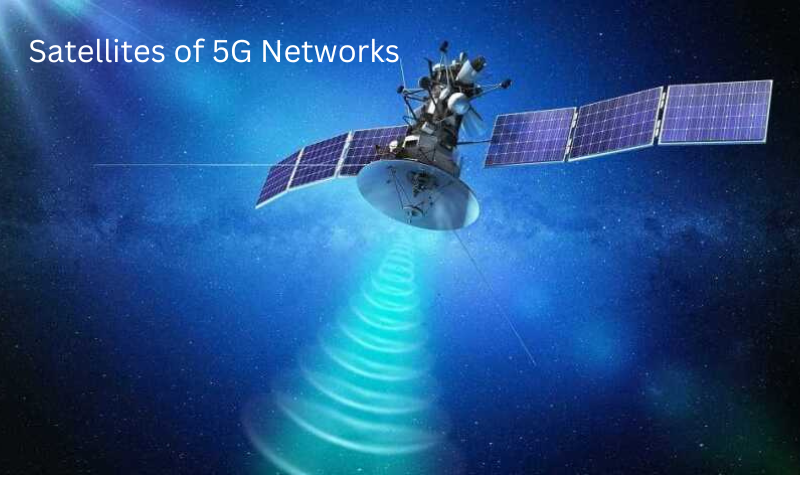
The Role of Satellites in the Development of 5G Networks
5G is here, and new equipment is being installed in cities across the world. In many cases, demand for 5G capacity is exceeding infrastructure improvements, especially in rural areas that are difficult to access.
For years, satellite communication has remained a standalone technology, independent of mobile networking. But with the next generation of satellites – built from 5G architecture – they will integrate with networks to manage connectivity to cars, vessels, airplanes and other IoT devices in remote and rural areas.
In the near future, 5G signals will be beamed down from space and support our terrestrial 5G infrastructure on Earth. The end result of this new space race for satellites is the promise of offering customers a seamless wireless experience across the globe.
5G is slowly becoming available in more and more urban areas, with the promise of high-speed connectivity and low-latency services that people have been wanting for a while, such as gaming and virtual/augmented reality. However, the same infrastructure model that works in cities isn’t going to cut it for more rural or remote areas. In areas either currently not connected to mobile networks or poorly served today, the use of satellites in future 5G networks could potentially enable economical coverage across the Earth, even over the oceans and poles. Satellites enabling 5G in remote areas can bring such use cases to users but also enable applications such as telemedicine, education, and banking. With this technology, people in rural areas or other places that are typically underserved by mobile networks will have access to a variety of services that can improve their quality of life.
Communication via satellites
Satellites in a geostationary orbit around 35,000 km above the earth’s surface are being used to provide internet or broadband services, due to recent advances in Ka-band transceivers and spot beam technology. These advances enable High Throughput Satellite or HTS technology to cover very large areas, even whole continents; however, due to their distance from Earth, such satellites suffer from one-way connection latency of at best around 280 ms.
GEO satellite internet typically has high round-trip latencies, over 1000 ms, due to network architecture. Another problem is that the TCP protocol is not ideal for long delays. However, using TCP more efficiently, as well as other protocols, still allows satellites to offer many broadband services. A recent development, Low-Earth Orbit or LEO satellite constellation is an array of small satellites and ground stations that can communicate with each other using G2G, S2S, G2S, and S2G links.
LEO satellites typically orbit 100 to 1,000 miles above the Earth’s surface. This altitude provides many benefits, one of which is lower latency. For example, a GEO satellite orbiting at 35,000 km has an end-to-end latency of around 280 ms, while a LEO satellite orbiting at 350 to 1,200 km drops that delay down to 6 to 30 ms respectively.
The latency
Satellites are a key component of 5G networks, as they provide the low latency and high reliability that is required for 5G services. This is why there is so much interest in Low-Earth Orbit or LEO satellite companies such as OneWeb, SpaceX, Project Kuiper (Amazon), Telesat and AST & Science. These companies are all competing to bring voice, mobile broadband, and other services to underserved areas of the world.
The 3GPP study on satellite integration into the 5G network uses a bent-pipe architecture with “regenerative payload”. This means that a 5G distributed unit (DU) or gNB (5G base station) is located in the LEO satellite. The satellite receives and dis-assembles incoming 5G signals using signal-processing techniques such as demodulation and decoding. It then re-assembles and transmits the signals by re-encoding and modulating them.
In this architecture, using an efficient LDPC decoder can minimize the attenuation effects in the uplink from user terminals. This has potential benefits, such as mitigating the risk of an intermittent signal or downtime (eg. during rainfall). Inter-satellite links (ISLs) in LEO constellations can be used for communications between regenerative payloads. This widens the geographical scope of the receiving ground station/user terminal. The mesh network between satellites in a constellation can provide great utility in supplementing a limited terrestrial-based 5G infrastructure.
HARQ, latency, and reliability
Hybrid automatic repeat requests (HARQ) are a type of error-correction scheme that is used in terrestrial and satellite communications in order to compensate for any channel errors that may occur. HARQ is essentially a combination of automatic repeat request (ARQ) and forward error correction. In short, HARQ retransmits packets when errors cannot be corrected by the error correction code. This is important to note for 5G systems because, as latency becomes increasingly important for emerging high-reliability and low-latency applications, retransmissions need to be kept to a minimum.
Minimizing HARQ retransmissions is critical for both terrestrial and the latest LEO satellite systems that use Low Density Parity Check (LDPC) encoding for forward error correction. Channel conditions in satellite systems are typically more severe than terrestrial networks due to longer distances and worse atmospheric conditions, plus longer latencies due to the length of the channel.
The role of satellites in the development of 5G networks is to provide high speed and low latency data to cellular towers. As more and more users demand faster internet, it is important for cellular towers to be connected to satellites to provide faster connection speeds. Satellite internet can also be used in cases of emergency, as it is more reliable than other types of internets.
For more information contact us at www.philomathresearch.com